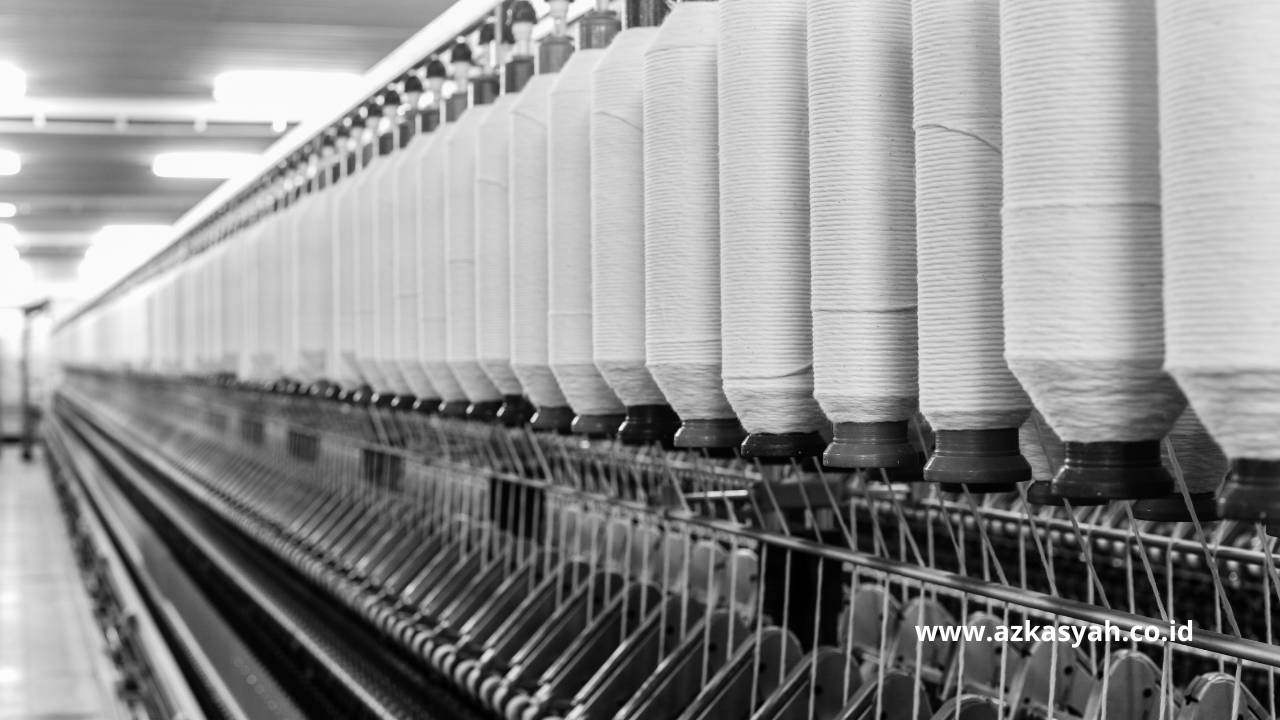The Future of the Textile Industry: Key Innovations and Challenges for Sustainable Growth
The textile industry has been a vital part of human civilization for centuries. From the early days of weaving simple fabrics by hand to today’s advanced manufacturing processes, textiles have played a crucial role in daily life and global economies. But the future of this essential industry is undergoing significant changes. As we move forward, the textile sector faces unprecedented challenges, opportunities for innovation, and a growing demand for sustainability.
In this article, we’ll explore the future of the textile industry, examining the trends, technologies, and key factors shaping its evolution. We’ll also address the challenges the sector faces and how it is adapting to a changing world.
1. Overview of the Global Textile Industry
The global textile industry is vast, covering everything from fiber production to garment manufacturing. This sector includes a wide range of products, including clothing, home textiles, industrial fabrics, and more. In recent years, the textile industry has seen rapid growth, fueled by increasing consumer demand, globalization, and technological advancements.
- Market Size and Importance: The textile industry is a major contributor to the global economy. In 2023, the global textile market was valued at over $1 trillion and is projected to grow significantly in the coming years.
- Employment: The industry is also a major employer, particularly in developing countries where textile manufacturing provides millions of jobs.
- Key Players: China, India, the United States, and the European Union are among the largest producers and exporters of textiles.
2. Key Trends Shaping the Future of the Textile Industry
The future of the textile industry is shaped by several key trends, each influencing how textiles are produced, used, and consumed. These trends reflect changes in consumer behavior, technological innovation, and global challenges.
2.1. Sustainability and Eco-Friendly Practices
Sustainability is a central focus for the future of the textile industry. Consumers are increasingly aware of the environmental impact of fast fashion and are demanding more eco-friendly products.
- Sustainable Fibers: There is a growing shift towards sustainable fibers, such as organic cotton, hemp, and recycled polyester. These materials reduce the environmental footprint of textile production.
- Circular Economy: The concept of a circular economy is gaining traction in textiles. This involves designing products with longevity, recyclability, and minimal waste in mind.
- Water and Energy Use: Textile production is water and energy-intensive. Future innovations will focus on reducing water consumption and energy use through more efficient production processes.
2.2. Digital Transformation in Textile Manufacturing
Digitalization is revolutionizing the textile industry. From automated production to smart fabrics, technology is transforming how textiles are created, marketed, and sold.
- Automation and Robotics: Advances in automation and robotics are increasing efficiency in textile manufacturing, reducing costs, and improving precision.
- Smart Textiles: Smart textiles, or e-textiles, are fabrics embedded with digital components like sensors and conductive threads. These innovations have applications in healthcare, sports, and fashion.
- Digital Printing: Digital textile printing is becoming more popular, offering greater design flexibility and reducing waste compared to traditional dyeing and printing methods.
2.3. Globalization and Supply Chain Challenges
Globalization has allowed the textile industry to expand its supply chain across multiple countries, but this interconnectedness also presents challenges.
- Supply Chain Disruptions: The COVID-19 pandemic exposed vulnerabilities in global supply chains, leading to a push for more localized production and diversification of suppliers.
- Trade Policies: Changes in trade policies, tariffs, and labor regulations impact the flow of textile products across borders, influencing where companies source and produce textiles.
3. Innovation in Textile Production: What’s Next?
The textile industry is at the forefront of technological innovation. Advances in material science, production methods, and sustainability practices are opening up new possibilities for the future of textiles.
3.1. Biodegradable and Recyclable Materials
One of the most exciting developments in textiles is the creation of biodegradable and fully recyclable materials. These materials help address the issue of textile waste, which has become a major environmental concern.
- Biodegradable Textiles: Scientists are developing textiles that decompose naturally, reducing landfill waste. Innovations like spider silk, made from bioengineered proteins, and mushroom leather are leading the way in biodegradable materials.
- Recycling Technologies: New recycling technologies are allowing old garments to be turned into new fabrics. Mechanical and chemical recycling processes are improving, making it easier to recycle textiles without losing quality.
3.2. 3D Printing in Textiles
3D printing is making its way into the textile industry, offering revolutionary ways to create custom garments and fabrics.
- Customization and On-Demand Production: 3D printing allows for greater customization of textiles, enabling brands to create made-to-order products that reduce overproduction and waste.
- Innovative Designs: Designers are using 3D printing to create complex, intricate textile patterns that would be impossible to achieve with traditional manufacturing techniques.
4. Sustainability: The Key to the Future of Textiles
The future of the textile industry is closely tied to its ability to embrace sustainability. With growing concerns about climate change and the environmental impact of production processes, the industry must adopt greener practices.
4.1. Reducing Carbon Footprint
Efforts to reduce the carbon footprint of textile production are a top priority. This includes using renewable energy sources, improving energy efficiency, and reducing reliance on fossil fuels in manufacturing.
- Green Energy Solutions: Many textile factories are transitioning to renewable energy, such as solar and wind power, to run their operations more sustainably.
- Energy-Efficient Machinery: The adoption of energy-efficient machinery can significantly reduce the energy consumption of textile mills, helping to lower greenhouse gas emissions.
4.2. Ethical Labor Practices and Social Responsibility
Sustainability in the textile industry isn’t just about the environment—it’s also about people. Ethical labor practices and social responsibility are becoming increasingly important for both consumers and companies.
- Fair Wages and Working Conditions: The push for ethical labor practices ensures that workers in textile factories, especially in developing countries, are treated fairly and paid living wages.
- Supply Chain Transparency: Brands are increasingly focusing on transparency in their supply chains, providing consumers with information about where and how their clothes are made.
5. Challenges Facing the Future of the Textile Industry
While the future of the textile industry is full of exciting possibilities, it also faces several significant challenges. Overcoming these challenges will require innovation, collaboration, and a commitment to sustainability.
5.1. Environmental Impact
Textile production is one of the most polluting industries in the world, with significant water, energy, and chemical use. Addressing this environmental impact will be key to the industry’s future success.
- Waste Management: Textile waste is a growing problem. Finding ways to reduce waste, through recycling and sustainable design, will be critical.
- Chemical Use: The use of toxic chemicals in dyeing and finishing textiles poses environmental and health risks. Safer, more sustainable alternatives are needed.
5.2. Supply Chain Complexity
As the textile supply chain becomes increasingly global, managing its complexity is a major challenge. Companies must navigate issues like tariffs, labor regulations, and political instability in key sourcing countries.
- Logistical Challenges: The logistics of moving raw materials and finished products across borders can be costly and time-consuming.
- Reshoring Production: Some companies are exploring reshoring, or bringing production back to their home countries, to reduce reliance on overseas suppliers and mitigate supply chain risks.
5.3. Consumer Expectations and Market Shifts
Consumer behavior is changing, with growing demand for sustainable, ethical, and high-quality products. Companies that fail to meet these expectations may struggle to stay competitive.
- Shift Toward Quality: Consumers are increasingly valuing quality over quantity, seeking durable and sustainable products that last longer.
- Customization: The rise of customization, where consumers want products tailored to their preferences, is putting pressure on textile companies to adopt flexible manufacturing techniques.
6. Conclusion: A Vision for the Future of Textiles
The future of the textile industry is dynamic and full of potential. With the right combination of sustainability, technological innovation, and ethical practices, the industry can meet the challenges it faces and continue to thrive. By embracing new materials, reducing environmental impact, and adapting to changing consumer demands, the textile sector will play a pivotal role in shaping the future of global economies and sustainable development.
FAQs
1. What is driving innovation in the textile industry?
Innovation in the textile industry is driven by several factors, including advances in technology, sustainability efforts, and changing consumer demands. Key innovations include the development of smart textiles, digital printing, and the use of biodegradable and recyclable materials.
2. How is the textile industry addressing sustainability?
The textile industry is focusing on sustainability by reducing its environmental impact. This includes using sustainable fibers, reducing water and energy consumption, implementing recycling processes, and adopting circular economy principles.
3. What role does technology play in the future of textiles?
Technology plays a crucial role in the future of textiles, with advancements such as automation, 3D printing, and smart fabrics transforming how textiles are produced and used. These technologies offer more efficient production methods, greater customization, and innovative new products.
4. What challenges does the textile industry face?
The textile industry faces several challenges, including environmental impact, supply chain complexity, and changing consumer expectations. Addressing these challenges will require innovation, collaboration, and a commitment to ethical and sustainable practices.
5. How is the global supply chain affecting the textile industry?
Globalization has expanded the textile industry’s supply chain but also introduced challenges such as supply chain disruptions, trade policy changes, and logistical difficulties. Companies are now exploring ways to diversify suppliers and localize production to mitigate these risks.
6. What is the future of sustainable textiles?
The future of sustainable textiles lies in adopting eco-friendly materials, improving recycling technologies, and reducing the overall carbon footprint of textile production. Companies that prioritize sustainability will be well-positioned to meet growing consumer demand for ethical and environmentally responsible products.



